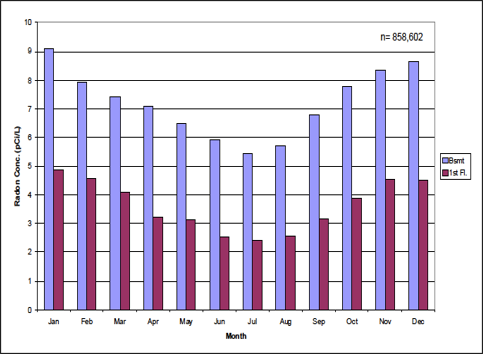Seasonal Variations
Just as radon concentrations in houses can vary daily, levels also vary on a seasonal basis. The year’s highest radon concentrations may be expected in the heating season, when suction placed on the basement or lowest structural level is at its greatest, and windows and doors are closed. The lowest rates are expected when houses have their windows and doors open so that ventilation rates are high and pressure differentials are equalized.
Figure 3-24 shows the winter-summer radon measurements for a group of houses in Spokane, Washington. Here, part of the explanation for the large differences is the open house conditions found in summer in cold climates.
According to EPA research, there is some evidence that air conditioning may reduce soil gas entry in warm climates. However, during periods of air conditioning, radon can accumulate to higher levels than those for winter in warmer climates. The colder indoor air is denser than the outdoor air and exerts a positive pressure on the soil.
In addition to seasonal variations a correlation also exists between the and first floor of the home. Figure 3-25 shows the seasonal distribution of radon concentrations over time from groups of studies conducted in Pennsylvania from 1990-2003. It shows the typical winter highs and summer lows for both basement and first floor.


